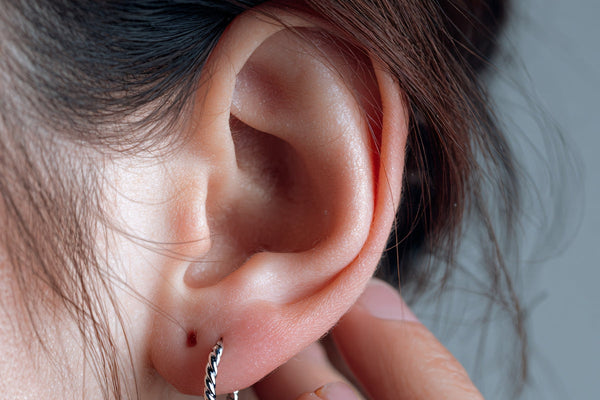
Swimmer’s Ear, also known as otitis externa, is an infection or inflammation of the outer ear canal - the passage that runs from the ear opening to the eardrum. It’s commonly caused by water trapped in the ear after swimming, bathing, or showering, which creates the perfect environment for bacteria or fungi to grow.
While it can be uncomfortable, swimmer’s ear is usually treatable with simple care and medication. At Leightons, we’re here to help you understand the signs, protect your ears, and keep your hearing healthy all year round.
What is swimmer’s ear?
Swimmer’s Ear is an outer ear infection that develops when moisture becomes trapped in the ear canal. The warm, damp environment allows bacteria or fungi to multiply, leading to redness, swelling, and irritation.
It can affect anyone but is particularly common in people who swim regularly or spend a lot of time in the water. Even showering, using cotton buds, or inserting objects into the ear canal can increase the risk by damaging the skin’s natural barrier.
What causes swimmer’s ear?
Several factors can contribute to the development of swimmer’s ear:
- Trapped water after swimming or bathing
- Scratching or cleaning the ear canal with cotton buds or fingers
- Excess earwax, which can hold moisture inside the ear
- Wearing earbuds or hearing aids that block airflow
- Exposure to chemicals or chlorine that irritate the skin inside the ear
It’s important to keep your ears clean and dry but to do so safely - without inserting objects into the canal.
Common symptoms of swimmer’s ear
Swimmer’s Ear can range from mild discomfort to more painful inflammation. Common symptoms include:
- Ear pain, especially when touching or pulling the ear
- Itching inside the ear canal
- A feeling of fullness or blockage in the ear
- Fluid discharge (clear or cloudy)
- Redness or swelling around the ear
- Temporary hearing loss if the canal becomes blocked
If left untreated, the infection can spread or become more painful. Early treatment helps prevent complications and promotes faster recovery.
How is swimmer’s ear diagnosed and treated?
A GP or audiologist can diagnose swimmer’s ear by examining your ear canal using an otoscope. They’ll check for inflammation, redness, or discharge.
Treatment typically includes:
- Prescription ear drops containing antibiotics or antifungal medication to clear the infection
- Pain relief, such as paracetamol or ibuprofen, to ease discomfort
- Keeping the ear dry while it heals - avoid swimming and take care when showering
Most people recover within 7-10 days with proper treatment. In severe cases, oral antibiotics may be needed.
Preventing swimmer’s ear
Prevention is the best way to protect your ears, especially if you swim or bathe frequently. Here are some easy tips:
- Dry your ears thoroughly after swimming or showering - tilt your head to each side to let water drain out.
- Avoid inserting objects like cotton buds or fingers into your ears.
- Use a towel to gently dry the outer ear, not the canal.
- Wear swimming earplugs to keep water out if you swim regularly.
- Avoid swimming in polluted water or untreated pools.
- See an audiologist for regular ear health checks, especially if you’re prone to earwax or infections.
These small steps can make a big difference in keeping your ears healthy and infection-free.
How Leightons can help
At Leightons, we offer professional hearing assessments to ensure your ears are healthy, clear, and free from infection or wax build-up. Our audiologists can:
- Examine your ears safely using specialist tools.
- Identify signs of infection, irritation, or blocked ear canals.
- Refer you to your GP or ENT specialist if medical treatment is needed.
- Provide advice on ear care and prevention, including the safe use of earplugs and cleaning tips.
We’re here to help you protect your hearing, prevent discomfort, and enjoy the activities you love - safely.
Book your free hearing assessment today and keep your ears clear, comfortable, and ready for the water.







